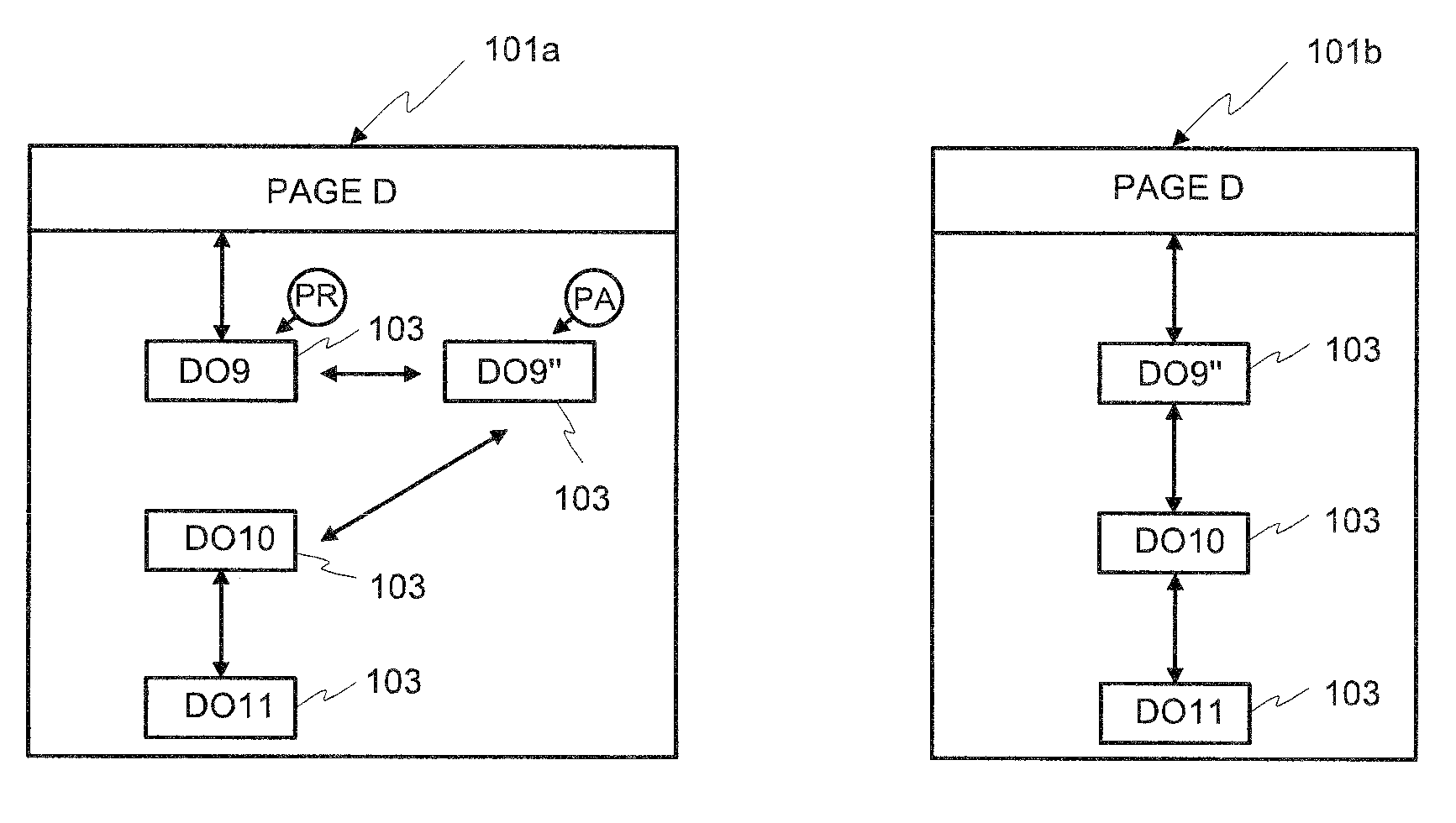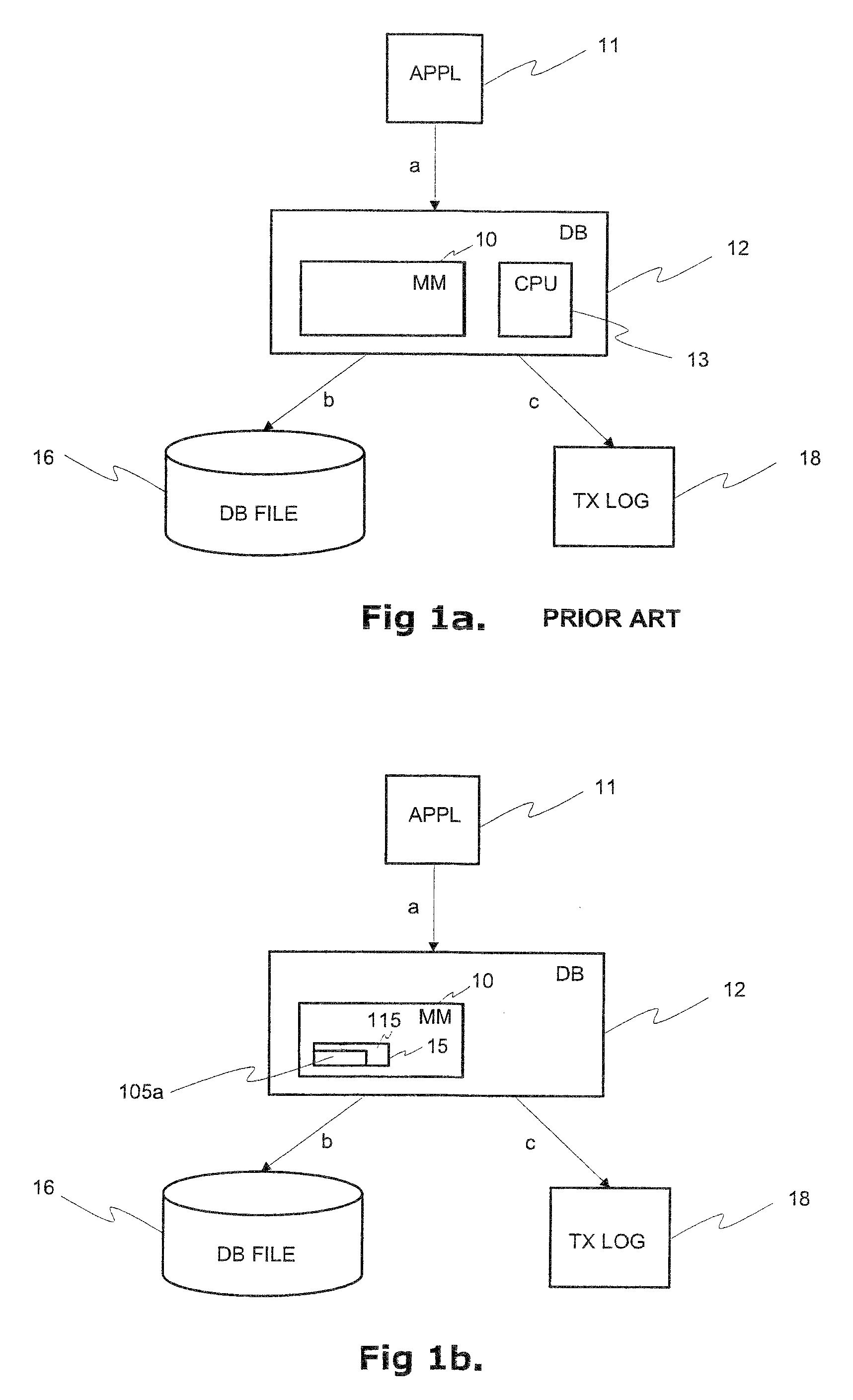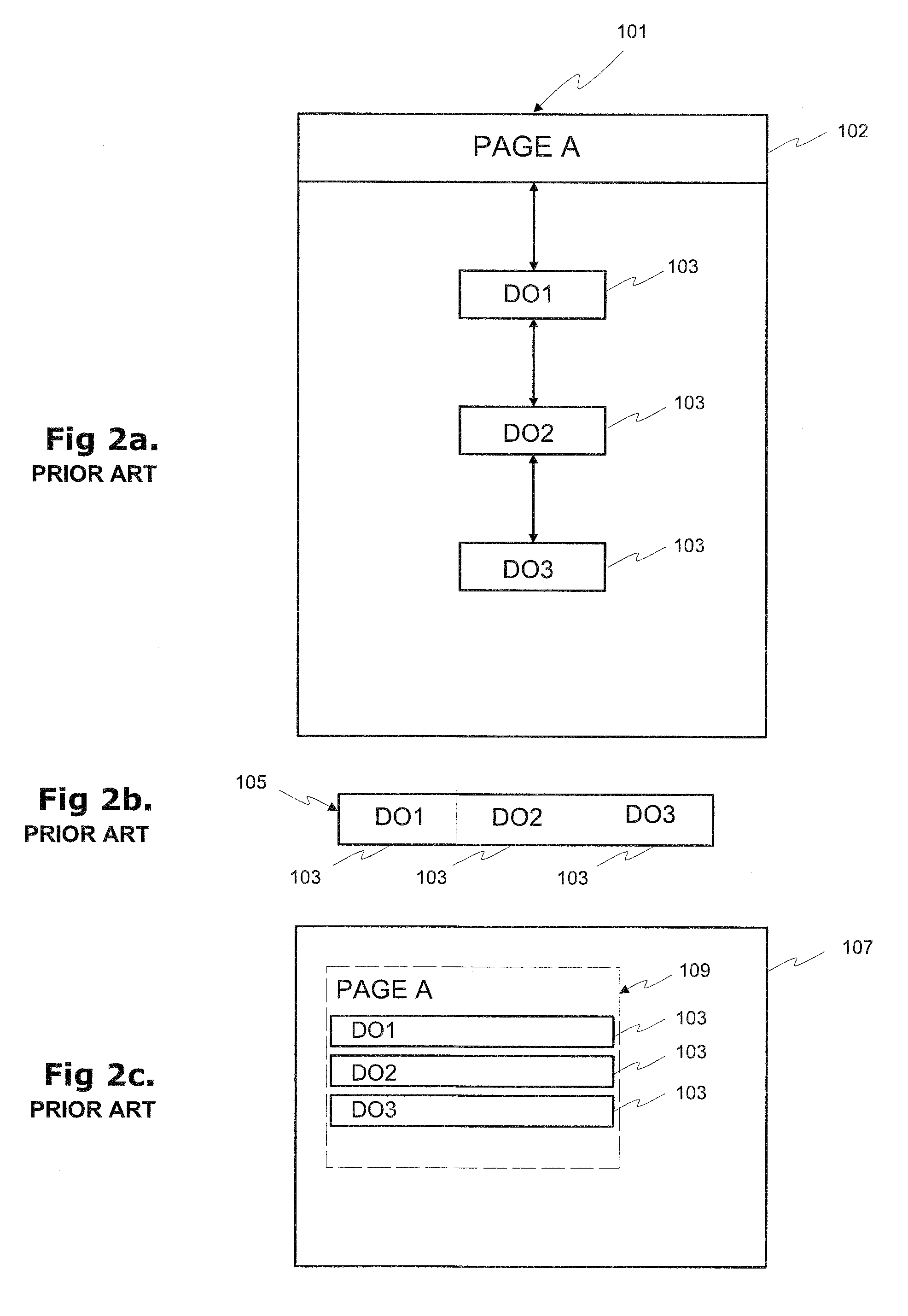Method for checkpointing a main-memory database
a database and main-memory technology, applied in the field of computer-based systems, can solve the problems of slowing down a transaction level processing, affecting the efficiency of data processing, and affecting the quality of data processing, so as to achieve the effect of saving main-memory usage and not slowing down the processing of transactions
- Summary
- Abstract
- Description
- Claims
- Application Information
AI Technical Summary
Benefits of technology
Problems solved by technology
Method used
Image
Examples
Embodiment Construction
[0068]Descriptions of FIGS. 1a, 2a-2c, 3a-3d and 4a-4d were given earlier in connection with the description of the state of art.
[0069]As an exemplary embodiment of a computer system according to the invention there is depicted in FIG. 1b a relational database management system (DBMS) arrangement. A relational DBMS arrangement according to the invention has a database server 12 comprising the primary storage unit 10 and database file unit 16 being the secondary storage. At the transactional level the general database processing is similar to as described in accordance with FIG. 1a. At the storage level the primary storage unit 10 is formed of pages, typically arranged into a doubly linked list. In the main-memory of primary storage unit 10 the page is in a form of a logical page which is a list of data objects floating around the main-memory. A memory location 15 is allocated in the main-memory for a disk page which represents a page on the disk. The page is presented as a physical ...
PUM
 Login to View More
Login to View More Abstract
Description
Claims
Application Information
 Login to View More
Login to View More - R&D
- Intellectual Property
- Life Sciences
- Materials
- Tech Scout
- Unparalleled Data Quality
- Higher Quality Content
- 60% Fewer Hallucinations
Browse by: Latest US Patents, China's latest patents, Technical Efficacy Thesaurus, Application Domain, Technology Topic, Popular Technical Reports.
© 2025 PatSnap. All rights reserved.Legal|Privacy policy|Modern Slavery Act Transparency Statement|Sitemap|About US| Contact US: help@patsnap.com



